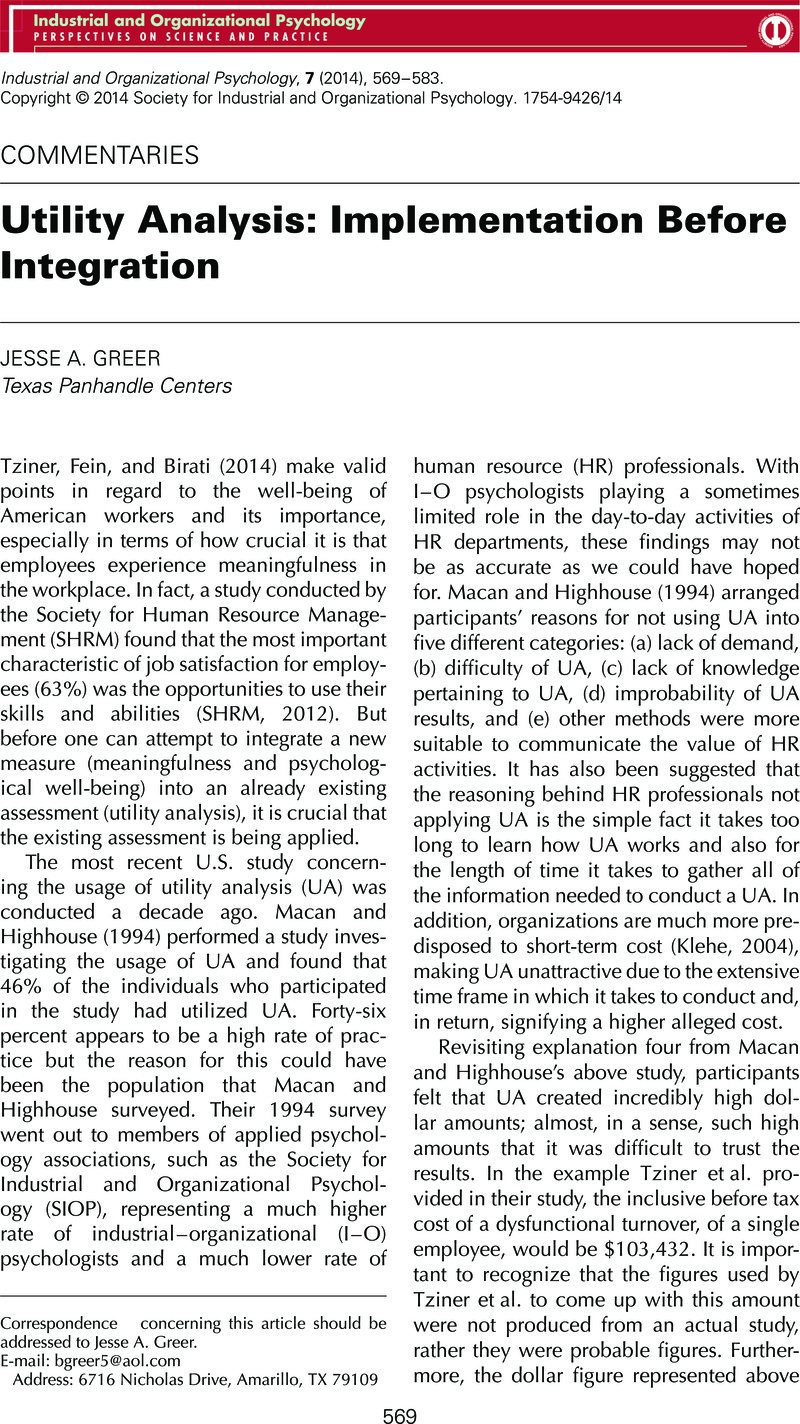No CrossRef data available.
Article contents
Utility Analysis: Implementation Before Integration
Published online by Cambridge University Press: 10 April 2015
Abstract
An abstract is not available for this content so a preview has been provided. Please use the Get access link above for information on how to access this content.

- Type
- Commentaries
- Information
- Copyright
- Copyright © Society for Industrial and Organizational Psychology 2014
References
Brogden, H. (1949). A new coefficient: Application to biserial correlation and to estimation of selective efficiency. Psychometrika, 14(3), 169–182. doi: 10.1007/bf02289151Google Scholar
Klehe, U. C. (2004). Choosing how to choose: Institutional pressures affecting the adoption of personnel selection procedures. International Journal of Selection and Assessment, 12(4), 327–342. doi: 10.1111/j.0965-075X.2004.00288.xCrossRefGoogle Scholar
König, C. J., Bösch, F., Reshef, A., & Winkler, S. (2013). Human resource managers' attitudes toward utility analysis: An extended and refined update from Switzerland. Journal of Personnel Psychology, 12(3), 152–156. doi: 10.1027/1866-5888/a000090CrossRefGoogle Scholar
Macan, T., & Highhouse, S. (1994). Communicating the utility of human resource activities: A survey of I/O and HR professionals. Journal of Business and Psychology, 8(4), 425–436. doi: 10.1007/bf02230958Google Scholar
Ramlall, S. (2003). Managing employee retention as a strategy for increasing organizational competitiveness. Applied H.R.M. Research, 8(2), 63–72. Retrieved from http://www.xavier.edu/appliedhrmresearch/issues.htmlGoogle Scholar
SASHA Corporation. (n.d.). Compilation of turnover cost studies. Retrieved from http://www.sashacorp.com/turnframe.htmlGoogle Scholar
Selden, D. R. (2010). The effects of staff turnover on psychiatric rehabilitation programs. Psychiatric Rehabilitation Journal, 34(1), 71–73. doi: 10.2975/34.1.2010.71.73Google Scholar
Society for Human Resource Management (SHRM). (2012). 2012 Employee job satisfaction and engagement. Retrieved from http://www.shrm.org/Research/SurveyFindings/Articles/Documents/SHRM-Employee-Job-Satisfaction-Engagement-Figures.pdfGoogle Scholar
Tziner, A., Fein, E. C., & Birati, A. (2014). Tempering hard times: Integrating well-being metrics into utility analysis. Industrial and Organizational Psychology: Perspectives on Science and Practice, 7(4), 554–568.Google Scholar


